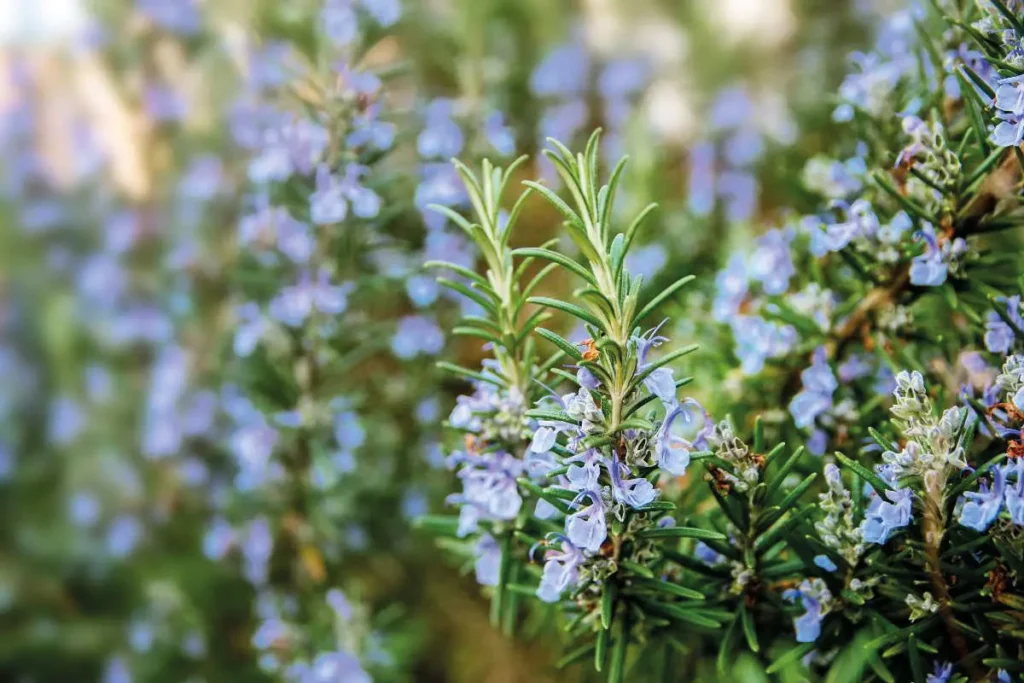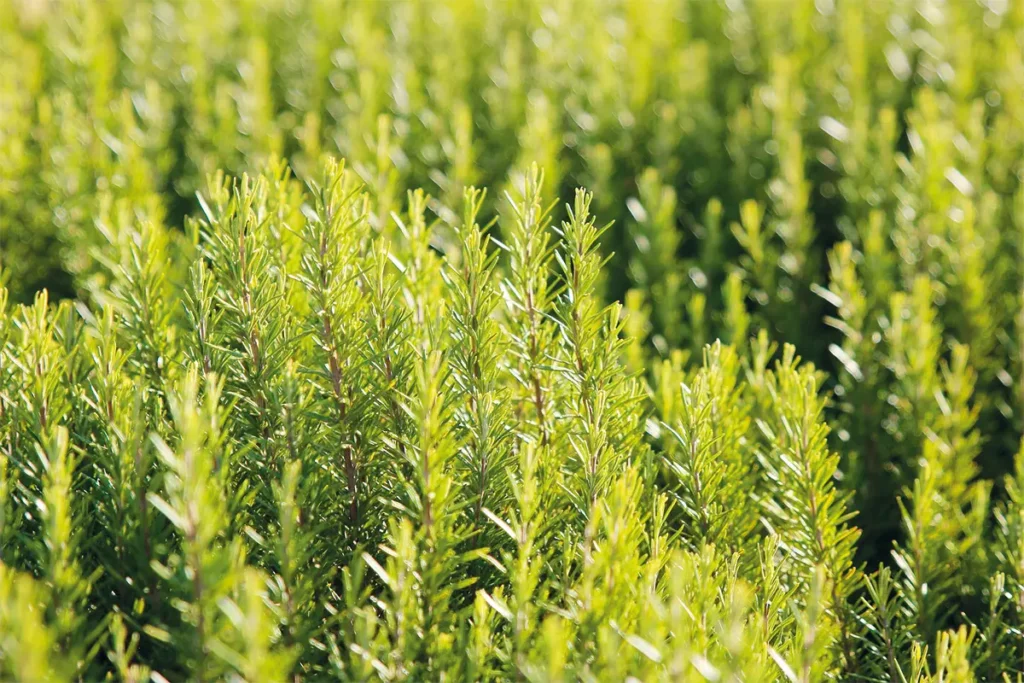


Nome Italiano: Rosmarino
Nome scientifico: Rosmarinus officinalis L.
Nome Gallurese: Romasinu
Descrizione:
Pianta arbustiva sempreverde che raggiunge altezze di 50–300 cm, con radici profonde, fibrose e resistenti, ancoranti; ha fusti legnosi di colore marrone, prostrati ascendenti o eretti, molto ramificati; i giovani rami pelosi di colore grigio-verde sono a sezione quadrangolare. Foglie consistenti e aghiformi, di colore verde scuro sulla pagina superiore e grigiastre nella pagina inferiore per la presenza di peli. Al tatto la pianta emana un caratteristico profumo aromatico e canforato. I fiori sono di colore azzurrino o bianco e fioriscono in primavera estate sulle sommità dei rami. Il nome deriva probabilmente dalle parole latine “ros” e “marinus” che significa rugiada del mare o rosa del mare, atteso che la pianta cresce spontanea nelle zone mediterranee vicino al mare.
Proprietà e usi:
Tra le proprietà del rosmarino viene indicato impiego contro stress e dolori articolari. Le sue virtù stimolanti, buono nei casi di astenia e debolezza generale, per alleviare lo stress da superlavoro fisico e intellettuale. Ha proprietà antinevralgiche e antisettiche e un buon effetto sugli stati influenzali e febbrili. Calma l’apparato respiratorio nei casi di asma e tosse, agisce sull’apparato digerente, e aiuta i movimenti peristaltici. Ha un buon effetto, anche sull’apparato osseo, come antireumatico.
Curiosità e miti:
Molto versatile e molto efficace, l’olio essenziale è abbastanza facile da ottenere anche in modo rudimentale, dalla distillazione a vapore delle cime fiorite e degli aghetti. Usato in cucina e in bagno, soprattutto contro la stanchezza. Conosciuta e amata in ogni epoca, la magia del rosmarino depura dalle tossine e richiama negli ambienti le energie positive. I Romani erano soliti impiegarlo come erba purificatrice per gli ambienti ritenendo che avesse doti depurative e che fosse funzionale a prevenire le malattie infettive. Virtù magiche gli vennero attribuite anche durante il Medioevo, quando si utilizzava per costruire amuleti contro i demoni e per fabbricare speciali pettini contro la calvizie e come rimedio per allontanare le tarme. Il suo uso era legato anche alle cerimonie funebri poiché era considerato un emblema di immortalità e durante le pestilenze venivano bruciate grandi quantità di questa pianta per purificare gli ambienti domestici.

Italian name: Rosmarino
Scientific name: Rosmarinus officinalis L.
Gallurese name: Romasinu
Description:
Evergreen shrubby plant reaching heights of 50-300 cm, with deep, fibrous, strong, anchoring roots; has brown woody stems, prostrate ascending or erect, much branched; the young hairy grey-green branches have a quadrangular cross-section. Large, needle-like leaves, dark green on the upper side and greyish on the underside due to the presence of hairs. The plant exudes a characteristic aromatic, camphorated scent when touched. The flowers are blue or white in colour and bloom in spring and summer on the tops of the branches. The name probably derives from the Latin words ‘ros’ and ‘marinus’ meaning sea dew or sea rose, as the plant grows wild in Mediterranean areas near the sea.
Properties and uses:
Among the properties of rosemary is its use against stress and joint pain. Its stimulating virtues are good in cases of asthenia and general weakness, and to relieve stress from physical and intellectual overwork. It has antineuralgic and antiseptic properties and a good effect on flu and febrile states. It soothes the respiratory system in cases of asthma and coughs, acts on the digestive system, and helps peristaltic movements. It also has a good effect on the bone system as an anti-rheumatic.
Curiosities and myths:
Very versatile and very effective, the essential oil is quite easy to obtain even in a rudimentary way, by steam distillation of the flowering tops and needles. Used in the kitchen and bathroom, especially against tiredness. Known and loved in every age, rosemary’s magic cleanses toxins and draws positive energies into the room. The Romans used to employ it as a room-purifying herb, believing it to have purifying qualities and to prevent infectious diseases. Magical virtues were also attributed to it during the Middle Ages, when it was used to make amulets against demons and to make special combs against baldness and as a remedy to ward off moths. Its use was also linked to funeral ceremonies as it was considered an emblem of immortality, and during plagues, large quantities of the plant were burnt to purify domestic environments.
